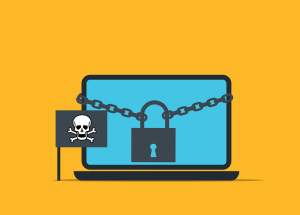When I was younger, getting an email with the subject line, “Hello Michael,” would have been shocking to me. But now, I’d be shocked if I received an email that didn’t use my first name and didn’t contain information that was relevant to my personal interests.
Customers can easily be over-personalized when we have so much information about them. No one wants to deal with a sleazy marketer.
Before customising, marketers need to ask themselves a few questions. The advantages of customising your email campaigns are numerous. How do you tell the difference between “creepy” email marketing and “personalisation“? Let’s take a look at some of the options for personalising your emails.
What’s the big deal with customising?
It wasn’t even on the radar of email marketers in the past, which is why they didn’t even think about customising their emails.
Personalised emails have the potential to be a huge asset for email marketers.
To what end?
Personalisation has the power to make the recipient feel like they’re the only person on the planet. An email subject line that includes your first name makes it feel more like an email from a friend than a business trying to sell you something. According to the 2022 Science of Email Marketing Report, personalising your subject line with your first name increases your clickthrough rate from 5.8% to over 7 percent.
Include your company name in the subject line to give your emails a more customised feel. Instead of saying “I think your company would be interested in these things,” I believe Relevate would be interested in these things.
We saw a 15 percent increase in clickthrough rates after incorporating the company name into the customisation. That’s a significant sum! As with the recipient’s first name, email recipients’ corporate names are an excellent way to convey that your company is making an effort to connect with the individuals it emails.
Other Benefits of Email Personalisation Include Increased Open and Clickthrough Rates
This technique actually makes segmenting your email list much simpler. If you want, you can personalise your emails with information that goes beyond the recipient’s first and company name. Your site visitors and leads may receive personalised material about the offers or pages they viewed on your site when you follow up with them. There is a lot of power in knowing what your customers are looking for.
How Much Personalization Is Enough for a Person?
The best way to know if personalisation is too much is to know your audience. It’s possible that you can get away with more personalisation if you’re targeting a tech-savvy audience.
If you’re marketing to a group of people who you know aren’t comfortable with personalisation, you may want to ease them into it gradually.
Even if customers have given you permission to sell to them, an overly personalised experience could make them uncomfortable (by filling out a form on your website).
Starting with their first name, you can add their business name and then include the activities they’ve done on your website after you’ve established a more personal relationship. As a result, extra caution must be taken when dealing with this particular group.
As a general rule, tailor content to the actions of individual visitors on your site. Consider the most recent websites visited, the subject of a purchase made, and, of course, the name and business of the user. If the email refers to an action they took on your website rather than a specific piece of information, the recipient has less reason to be concerned.
Before Sending the Email, Make Sure to Test Your Customisation
Suppose you tried to use the personalisation tag but didn’t have any information about the recipient? What would the email look like in the recipient’s inbox? Before you can send your email, you need to make sure that your personalisation tags are properly organised and make sense within the context of the message.
In contrast to creepy email marketing, personalised email marketing is the opposite. Ask yourself what your audience would like in the current purchase stage, and you’ll be less likely to shock them out of their comfort zone.
What’s your take on email personalisation? Starting to personalise your email messages is a good idea, but when should you start?







